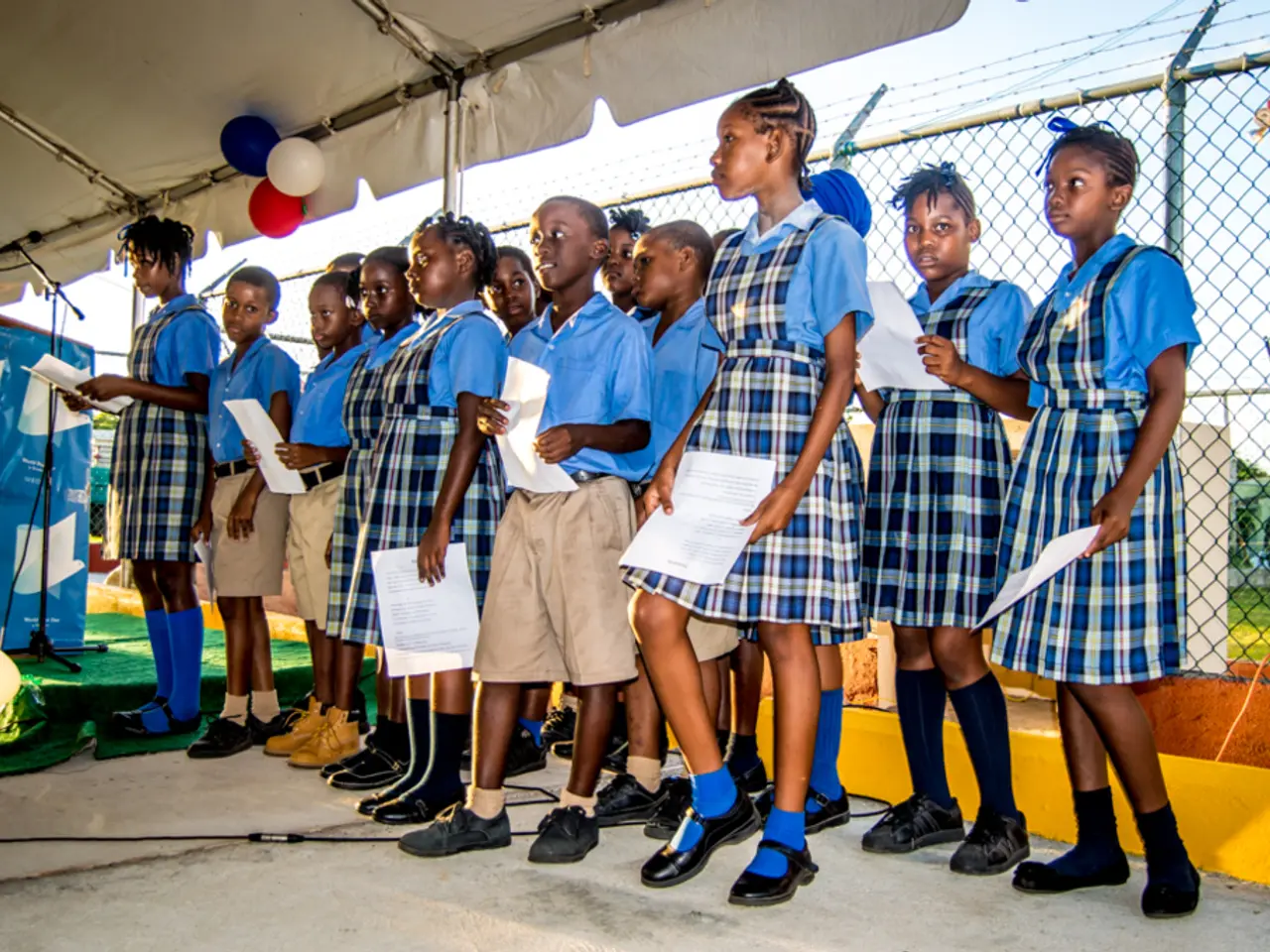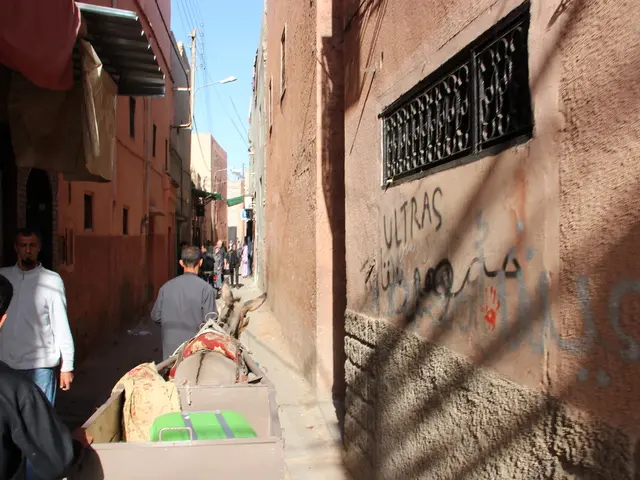NYC Public Schools implement cellphone ban from September; essential details outlined
New York City has announced a new state-wide policy aimed at creating a more focused and productive learning environment in public schools. Known as the "Distraction-Free" cell phone policy, the initiative will ban the unsanctioned use of smartphones and other internet-enabled personal devices during school hours, effective from the 2025-26 academic year [1][3][4].
Governor Kathy Hochul, in her announcement in May, stated that the policy is intended to allow students to learn and grow, rather than click and scroll, and to reduce addiction to social media feeds [1]. United Federation of Teachers President Michael Mulgrew echoed this sentiment, emphasizing that the policy is intended to make schools safer by reducing distractions from social media [1].
The policy mandates a bell-to-bell ban on the use of smartphones and internet-enabled devices, with some exceptions. Simple cellphones without internet capability may be used, and internet-enabled devices officially provided by the school for educational purposes are allowed during instructional times [1].
Schools are required to finalize and publish their local distraction-free policies by August 1, 2025, ensuring transparency and community awareness among students, parents, and staff [1][3]. New York City Public Schools (NYCPS) will align with this mandate through amendments to Chancellor’s Regulation A-413, with the policy approved by the NYC Panel for Educational Policy on July 23, 2025 [2][3].
The policy emphasizes preventing inequitable discipline, ensuring enforcement is fair and consistent across all student groups [1]. Schools must provide parents with a way to contact students during the day, addressing safety and communication needs [1].
To assist schools in implementing the policy, the state has secured $13.5 million in funding to purchase storage solutions (lockers, pouches, etc.) for phones [1]. New York City has allocated $25 million toward implementation efforts across its 1,600 public schools as part of the Fiscal Year 2026 budget, supplemented by $4.3 million from the state [2].
A dedicated statewide website launched by Governor Hochul provides a comprehensive policy FAQ, toolkit, and example policies to help schools develop and implement their local distraction-free plans [1][3][4]. Governor Hochul and Chancellor Aviles-Ramos have hosted roundtables with educators, union representatives, safety officers, and students to discuss implementation strategies and address concerns specifically for NYCPS [3].
In summary, the NYC "Distraction-Free" cell phone policy is a state-mandated, bell-to-bell smartphone ban with local flexibility in enforcement and implementation, backed by significant funding and support resources aimed at smooth rollout and equitable discipline across all schools. The policy is designed to foster a safe, productive, and focused learning environment while maintaining open communication between parents and students during the day [1][2][3][4].
References: [1] New York State Education Department. (2022). Distraction-Free Learning: A New Policy to Improve Student Learning. Retrieved from https://www.nysed.gov/news/2022/distraction-free-learning-new-policy-improve-student-learning [2] New York City Department of Education. (2022). Distraction-Free Learning: A New Policy to Improve Student Learning. Retrieved from https://www.schools.nyc.gov/initiatives/distraction-free-learning [3] New York City Mayor's Office. (2022). Governor Hochul, Chancellor Aviles-Ramos Announce New Distraction-Free Cell Phone Policy for New York City Public Schools. Retrieved from https://www1.nyc.gov/office-of-the-mayor/news/128-22/governor-hochul-chancellor-aviles-ramos-announce-new-distraction-free-cell-phone-policy-new-york-city-public-schools [4] New York City Council. (2022). Distraction-Free Learning: A New Policy to Improve Student Learning. Retrieved from https://www1.nyc.gov/site/council/legislation/Int-2022-235.html
The "Distraction-Free" cell phone policy, a new initiative in New York City, indicates a shift in education-and-self-development policy by focusing on creating a more focused learning environment. This move is also highlighted in policy-and-legislation, as it involves state-wide policies aimed at reducing distractions from social media during school hours.
The policy's implementation includes funding for storage solutions, efforts to develop and implement local distraction-free plans, and discussions with various stakeholders, demonstrating a commitment to its success in politics and general news.




